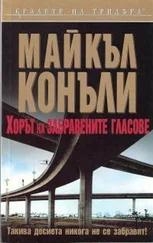Ballard looked around and saw that she had been wrong about there being a skylight on the roof. There were actually four of them — two over each garage bay — plastic bubbles shining in the moonlight. There was also a steel exhaust chimney that rose six feet above the roof line. The diffuser at the top was coated black by smoke and creosote.
Ballard inspected the skylights, moving from one to another with her flashlight, stepping around a pool of standing water that covered part of the roof. There were no lights on in the CCB warehouse below, but it didn’t matter. Visibility with the flashlight was limited. It appeared that each of the once-clear plastic bubbles had been haphazardly sprayed with white paint from the inside.
This was curious to Ballard. It appeared to be a move designed to keep anyone from looking down at activities below. But there were no taller buildings in the area with views through the skylights. Ballard thought about the boys caught earlier in the week attempting to glimpse naked women through the skylights of a strip club. Here, the attempt at skylight privacy seemed unwarranted.
Each of the skylights was hinged on one edge and could presumably be opened from within. This was the moment of decision. She had certainly already trespassed on private property but she would be crossing a more important line if she took things further. It was a line she had crossed before.
She had no direct evidence of anything but plenty of circumstantial facts that pointed the needle toward Dillon. She had the fact that the crime scene cleaner was in Hollywood with his van and his chemicals and cleansers on the night Daisy Clayton was taken. And she had the fact that he had ordered storage containers with the same brand mark that had ended up on the victim’s body, and in the size that would have been used to store and bleach it. The circumstances of the murder pointed to a killer who knew something about law enforcement and took the effort to rid the body of potential evidence to an extreme level.
She knew she could call Judge Wickwire, her go-to, and run these things by her in an effort to establish probable cause. But in her mind she could hear the judge’s voice saying, “Renée, I don’t think you have it.”
But Ballard thought she did have the right man. She decided she had come this far and was not turning around. She reached into a pocket and took out a pair of rubber gloves. Then she started checking the skylights.
Each of the rooftop bubbles was locked, but one of them felt loose on its frame. She moved around it, stepping in the water that had accumulated around its rear edge. The standing water was apparently a longtime problem. The moisture had worked its corrosive magic on the skylight’s hinges.
Ballard put the light in her mouth and reached down with both hands to the frame. She pulled up and the hinge screws gave way, coming out of the wet plaster abutment below the frame without protest. She pushed the skylight up until it rolled back on its rounded surface and into the water.
She pointed her light down and was looking at the flat white top of a box truck parked in the bay directly below the opening.
Ballard estimated that it was a drop of no more than eight feet.
Ballard lowered herself through the roof opening and hung for a moment by her hands before letting go and falling to the roof of the truck. She hit it off balance and fell onto her back, momentarily stunning herself and leaving a dent on the truck’s roof.
After lying still and recovering for a few seconds, she crawled toward the front of the truck, slipped down onto the cab, and then climbed down the side of it, using the sideview mirror and door handle as toeholds and grips.
Once she was on the concrete floor, Ballard checked the warehouse’s doors to see if she would have a quick escape route if needed. But the deadbolts on both front and back doors required a key on the inside as well.
With her flashlight in hand, she located a panel next to the front door with what she believed were the garage door switches, but like the doors, these required a key to operate. Ballard realized that she was going to have to figure out how to get up and out through the skylight or somehow break down one of the doors. Neither was a good choice.
Below the garage-door panel was a row of light switches that were not key controlled. She flicked them up and two rows of overhead fluorescents came on, brightly lighting the warehouse. She stood there for a long moment, studying the layout of the place. The two side-by-side parking bays took up the front half of the warehouse, while the rear half was dedicated to the storage of supplies and a small office area with a couch. In the corner opposite the office was an incinerator for burning the biologically hazardous materials collected at crime scenes.
One of the parking bays was empty, but there were fresh oil drips on the floor where a truck would normally sit. Ballard knew that the truck backed into the other bay was not the one she had seen earlier in the week when she had met Dillon. It was painted differently, with the full name of the company on the driver-side door and not the large CCB across the side panel. It was older, had low air in its tires, and appeared to her to have been sitting in disuse. It seemed to put the lie to what Dillon had said about having two trucks and four employees ready to go 24/7. He apparently was a one man operation.
It all added up to Ballard realizing that the truck Dillon currently used was out there somewhere, and she had no idea if he was on a job and could arrive back at the warehouse at any time or if he simply took his work truck home at night. It didn’t seem to Ballard that it would go over well with fellow residents to park a biohazard truck in the neighborhood. But Ballard had not seen any personal car that could belong to Dillon parked near the warehouse.
She decided to move quickly with her search and started with a survey of the desk standing against the wall near the rear door of the warehouse. Ballard scanned for any information or notation about a job that might give her an idea of where Dillon and the truck were. But after finding nothing, she moved on, attempting to open the desk’s file drawers to see if there were any historical records regarding the purchase of supplies from American Storage Products.
The drawers were locked and that ended her search of the desk.
The warehouse was neat and orderly. Against the wall opposite the incinerator were large plastic barrels containing cleaning and disinfecting liquids with hand pumps for filling smaller containers for use on individual jobs. There were shelves stacked high with empty plastic containers. Ballard checked these for size and the ASP logo that had left a mark on Daisy Clayton, but there was nothing that would be large enough to contain her body and nothing with the logo. She realized that she had neglected to ask Mittleberg the time frame of the orders from CCB that he had seen on his computer.
There was a small bathroom with a shower and it looked like it had been recently cleaned. She opened the medicine cabinet and found routine first-aid materials on its shelves.
Next to the bathroom was a closet in which Ballard found several white jumpsuits on hangers, CCB embroidered on the left breast pocket of each, and Roger on the right — further evidence that Dillon’s claim of fielding four employees was self-aggrandizement.
Ballard closed the closet and stepped over to the incinerator. It was a square stand-alone appliance with stainless-steel sidings and an exhaust pipe going straight up through the ceiling. The front was double-doored, and a matching stainless-steel staging table was positioned in front of it.
Ballard opened one of the doors of the burning chamber and the other opened automatically with it. She pointed the beam of her flashlight inside and got a sharp kick back of reflecting light. The interior panels of the chamber were so clean as to be shiny, and it looked like the ash trap below the flame bars had been vacuumed after its last use. The incinerator looked brand-new. She could see a gas pilot light burning blue in the back corner.
Читать дальше
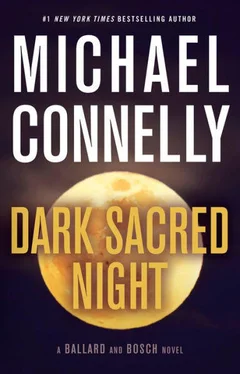
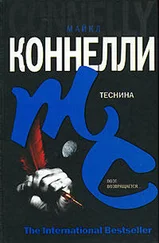
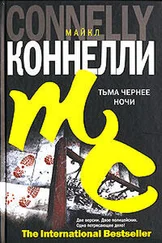




![Майкл Коннелли - Christmas Even [Short story]](/books/390532/majkl-konnelli-christmas-even-short-story-thumb.webp)
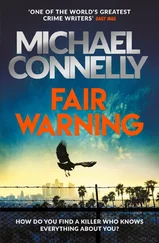
![Майкл Коннелли - The Night Fire [Harry Bosch - 22]](/books/405630/majkl-konnelli-the-night-fire-harry-bosch-22-thumb.webp)

